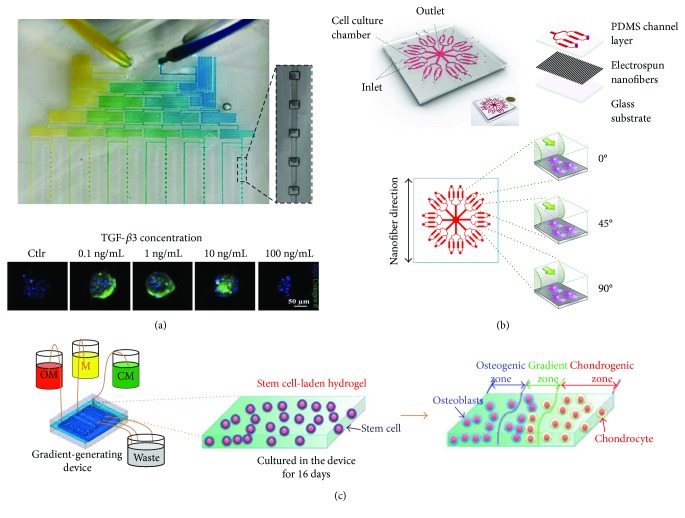Figure 2.
Microfluidic models for the screening of biochemical and biophysical factors. (a) Photograph of a microfluidic device including a serial dilution generator to develop a gradient of growth factors and a 3D culture area for the generation and perfusion of 3D cell spheroids. This device was exploited to generate a gradient of TGF-β3 and to identify the concentration able to induce type II collagen expression in micropellets (adapted from [16]). (b) Schematic illustration of a microfluidic device with integrated electrospun nanofibers to study the influence of 3 different flow directions with respect to fiber orientation on stem cell chondrogenesis (adapted from [58]). (c) Schematic representation of a microfluidic device for the development of the osteochondral interface. A system formed by two serpentines and a central channel, respectively, filled with osteogenic medium (OM), chondrogenic medium (CM), and cell culture medium (M), allows the generation of osteogenic and chondrogenic growth factor gradient to obtain spatially controlled differentiation of MSCs (adapted from [59]).

